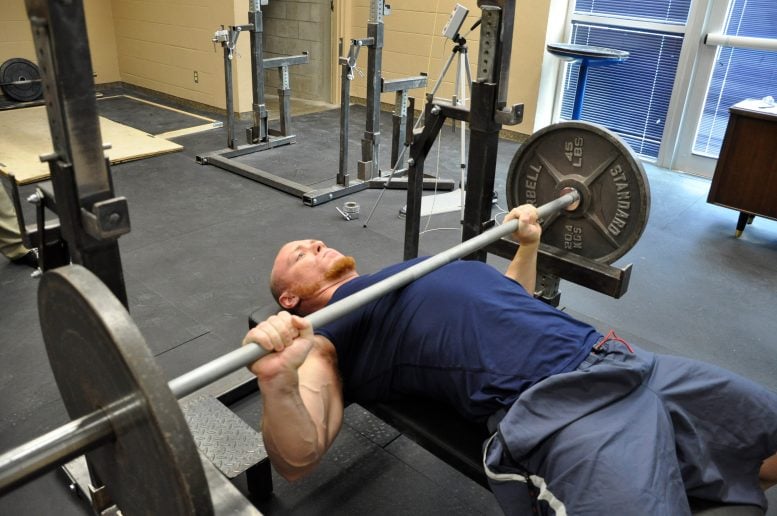A study by Florida Atlantic University found that training close to failure significantly enhances muscle growth but not strength gains. Recommendations include training closer to failure for hypertrophy and stopping short for strength, highlighting the need for further research in this area.
Research indicates that training near the point of failure enhances muscle growth, although its effects on strength gains remain unclear.
When engaging in resistance training, such as weight lifting, there is significant interest in understanding how approaching muscle failure—the point where you can no longer complete another repetition—impacts your results.
While research has looked at this concept in different ways, to date, no meta-analysis has explored the pattern (i.e., linear or non-linear) of how the distance from failure (measured by repetitions in reserve) affects changes in muscle strength and size.
As such, it’s still unclear how close to failure one needs to go to maximize muscle growth and strength.
Researchers from Florida Atlantic University and collaborators analyzed how training close to failure or not impacts muscle growth and strength. The study primarily looked at how training close to failure affects muscle growth in the main muscles used in an exercise. For example, if an individual was doing leg presses, the focus was on how training close to failure affects the quadriceps.
Researchers estimated the number of repetitions in reserve, which means how many more reps you could have done before reaching failure. They collected data from 55 various studies and ran detailed statistical analyses to see how different reps in reserve levels affected strength and muscle growth.
Findings on Muscle Growth and Strength Training
Results of the study, published in the journal Sports Medicine, found that how close you train to failure doesn’t have a clear impact on strength gains. Whether you stop far from failure or very close to it, your strength improvement appears to be similar. On the other hand, muscle size (hypertrophy) does seem to benefit from training closer to failure. The closer you are to failure when you stop your sets, the more muscle growth you tend to see.

Pushing close to failure is the point where you can’t do another rep. Credit: Florida Atlantic University
“If you’re aiming for muscle growth, training closer to failure might be more effective. In other words, it doesn’t matter if you adjust training volume by changing sets or reps; the relationship between how close you train to failure and muscle growth remains the same,” said Michael C. Zourdos, Ph.D., senior author and professor and chair of the Department of Exercise Science and Health Promotion within FAU’s Charles E. Schmidt College of Science. “For strength, how close you push to failure doesn’t seem to matter as much.”
The researchers suggest that individuals who aim to build muscle should work within a desired range of 0-5 reps short of failure for optimized muscle growth or while minimizing injury risk. For strength training, they suggest individuals should work toward heavier loads instead of pushing their muscles to failure. As such, they recommend that to train to gain strength, individuals should stop about 3-5 reps short of failure without applying additional physical strain on the body.
Enhanced Perception and Long-term Training Considerations
“Training closer to failure enhances the DOI: 10.1007/s40279-024-02069-2











/https://tf-cmsv2-smithsonianmag-media.s3.amazonaws.com/filer_public/34/31/3431771d-41e2-4f97-aed2-c5f1df5295da/gettyimages-1441066266_web.jpg)






Discussion about this post